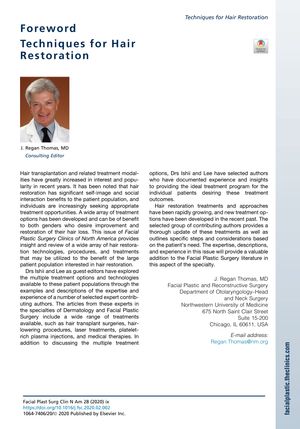Techniques for Hair Restoration
April 2020
in “
Facial Plastic Surgery Clinics of North America
”

TLDR In 2020, many new hair restoration treatments were developed, improving self-image and social interaction, with experts suggesting personalized treatment plans based on individual needs.
In 2020, the field of hair restoration saw a significant increase in interest and popularity, with a wide array of treatment options developed for both genders experiencing hair loss. These treatments, which include hair transplant surgeries, hair-lowering procedures, laser treatments, platelet-rich plasma injections, and medical therapies, were found to have substantial benefits for self-image and social interaction. The document, edited by Drs Ishii and Lee, provided a comprehensive review of these technologies, procedures, and treatments, drawing on the expertise and experience of selected expert authors in the specialties of Dermatology and Facial Plastic Surgery. The authors also provided insights into tailoring the ideal treatment program for individual patients based on their specific needs.